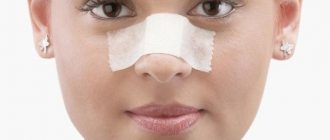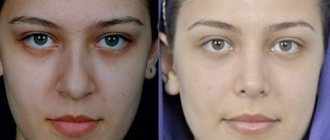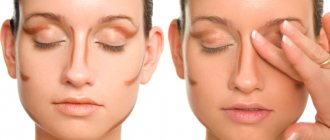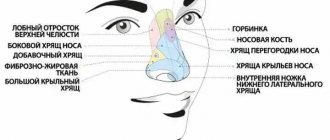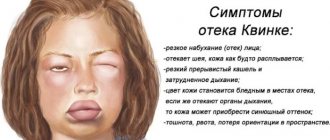Rhinoplasty is an operation to change the shape of the nose. Rhinoplasty is often performed simultaneously with septoplasty, a surgical correction of the nasal septum. After such an operation, breathing becomes easy and free without Mentos. Two of my patients independently said:
“It feels like the air is tickling my brain.”
I do not only aesthetic surgeries, but also reconstructive ones: restoration of the nose after injuries, congenital anomalies, and cancer. In difficult cases I use microsurgical techniques.
First I’ll show you a few cases, and then I’ll answer all your questions.
Photos before/after rhinoplasty
View all photos
Contraindications for rhinoplasty
- Medical contraindications to anesthesia;
- Autoimmune diseases;
- Blood clotting disorder;
- The presence of inflammatory phenomena in the area of intervention;
- Acute inflammation of the paranasal sinuses;
- Inflammatory changes on the skin of the nose;
- The previous nose surgery was performed less than six months ago;
Rhinoplasty should not be performed on professional contact sports athletes until their career ends.
Rhinoplasty in women requires taking into account the characteristics of the female body: the operation is best performed starting from the third day after the end of menstruation.
Rehabilitation after nose surgery
Immediately after the operation, the patient is in a ward in the clinic. In 95% of cases, the patient can return home within a day, in 5% - after two days.
The patient must come for an examination 5, 7 and 10 days after surgery;
The sutures are removed on the 7th day.
Bruises persist for 5-6 days, swelling in the nose area persists for 7-10 days.
The protective plate and internal splints are worn for 7-10 days.
What does the protective plate look like (not plaster!):
Protective plate for the nose after rhinoplasty ©Dikarev Alexey Sergeevich
What does the nose and face look like immediately after removing the protective plate and splints:
Nose surgery in 7 days ©Dikarev Alexey Sergeevich
I have collected detailed recommendations for the postoperative period in a separate file.
Rehabilitation after nose surgery - rhinoplasty
Prices
- Initial consultation on rhinoplasty₽3,000
- Including professional 3D modeling
- Repeated consultation on rhinoplasty₽6,000
- Primary rhinoplasty of Asian nose₽470,000
- Repeated rhinoplasty of Asian nose₽550,000
- * The price for all plastic surgeries includes: hospital stay, general anesthesia, all subsequent dressings and examinations throughout the year.
- ** Repeated surgery is always much more difficult than the primary one, as it is always associated with difficulties caused by the scar process, very often with incorrectly performed manipulations, not performed osteotomies, insufficiently removed cartilage and bone structures, and much more difficult if there are excessively removed cartilages, too low nasal bridge, which require complex reconstructive interventions using various types of grafts. Therefore, the cost of revision rhinoplasty varies depending on the complexity and scope of the upcoming surgical intervention.
Surgeon consultation
Complications after rhinoplasty
In my practice, I encountered 3 complications:
- Suppuration - 5 cases throughout the entire practice. The problem is detected and corrected within 5 days after surgery;
- Perforation of the nasal septum (“hole”) - 2 cases during the entire practice. The problem is detected and corrected within 24 hours after surgery;
- Nosebleeds - 1 case during the entire practice. The problem is detected and corrected within 24 hours after the operation.
The results of the operation (appearance, respiratory function) will be assessed no earlier than after 6 months. Until this period, the process of formation of scar tissue continues, and migrating microedema is possible, which changes both the external picture and appearance of the nose, and does not allow an objective assessment of the completeness of breathing.
It should be noted that according to official data from the American Association of Plastic Surgeons, 20% of patients who have undergone rhinoplasty seek reoperation due to complications or patient dissatisfaction with the results of the operation. In my practice this figure is 1%.
Piezo rhinoplasty
Recently, there have been many important innovations in rhinoplasty surgical technology: new anatomical concepts, new instruments and new equipment, and most importantly, a new way of looking at rhinoplasty as a surgical procedure.
Modern rhinoplasty is moving towards minimally invasive surgical interventions. This is an endoscopic technique for performing operations and a new technique for cutting bone tissue using piezo-ultrasound waves (piezo knife or piezo apparatus). Ultrasonic cavitation during operation of the device provides another big advantage in the form of hemostasis and asepsis.
One of America's leading rhinoplasty surgeons made the statement in January 2020: “We are all witnesses and participants in the 3rd revolution in rhinoplasty.” This statement was supported by leading plastic surgeons in America, the Rhinoplasty Society of Europe, the European Society of Facial Plastic Surgeons and Plastic Surgeons of Brazil.
All these new technologies were widely discussed at the last international meeting on Conservation Rhinoplasty in Nice (February 2020), and there were many presentations on Piezo Rhinoplasty, which falls under the category of Conservation Rhinoplasty. For this conference, European and American surgeons published a new book “Conserving Rhinoplasty”, co-authored by Daniel Rolin (USA, Los Angeles), Yves Saban (France, Nice, member of the European Academy EAFPS and ESGS, vice-president of the French Society of Facial Plastic Surgery, MD, Associate Professor at the University of Genoa), Peter Palhazy (plastic surgeon at the Semmelweis University in Budapest), and B. Kakir (renowned plastic surgeon).
At the open rhinoplasty conference in Bergamo (Italy), a significant number of papers were presented on conservation rhinoplasty and piezo nasal surgery.
Enrico Robotti (Dr. Enrico Robotti) Professor of the School of Plastic and Reconstructive Surgery of the University of Turin and Milan, member of the Education Council of the International Society of Aesthetic Plastic Surgery (ISAPS), one of the founders and elected Director of the European Society of Rhinoplasty (RSE) has been using piezo technology for several years rhinoplasty and generously shares his achievements in this area.
In 2020, a surgeon from Russia was elected chairman of the European Society of Rhinoplasty, which means that European countries are putting Russian rhinoplasty surgeons on the same level as themselves.
“Modern models of piezo knives are equipped with navigation systems; the surgeon sees on the monitor where the tip of the knife is located. This is a great achievement in modern medicine. 35 years ago, when I started doing rhinoplasty (closed technology), my eyes were my fingertips. Traditional osteotomy, where the main tool is a chisel and a hammer, is becoming a thing of history; it has been replaced by a piezo knife, which allows you to cut the nasal bone tissue with high precision. The surrounding tissues (vessels, nerves) remain undamaged, as a result, patients after rhinoplasty have less swelling and the rehabilitation period is reduced. Long-term hospitalization in the clinic is not required, 1 day is enough, previously all patients after rhinoplasty stayed in the clinic for about 10-14 days.”
Modern technologies of rhinosurgery - the piezo knife allows you to correct the nasal bones without using a chisel and hammer during rhinoplasty (the patient does not have to be afraid that his nasal bones will be broken by hitting with a hammer). The piezo knife allows you to make a very thin cut of the bone (0.3 mm), the bones of the nose are dissected with pinpoint precision.
Currently, our patients undergo rhinoplasty only a little more difficult than dental treatment; after the operation, a long hospital stay is not required. If 30 years ago all our patients spent 2 weeks in the hospital after rhinoplasty, today it is only one day.
Tests before rhinoplasty
Analyzes:
- General blood test (18 parameters) - valid for 10 days;
- Syphilis RPR - valid for 3 months;
- HIV - valid for 3 months;
- Hepatitis B - valid for 1 month;
- Hepatitis C - valid for 1 month;
- Coagulogram (5 parameters) - valid for 10 days;
- Total bilirubin - valid for 10 days;
- Potassium (K+), Sodium (Na+), Chlorine (Cl) - valid for 10 days;
- AST - valid for 10 days;
- ALT - valid for 10 days;
- Creatinine - valid for 10 days;
- Urea - valid for 10 days;
- Glucose - valid for 10 days;
- Total protein - valid for 10 days;
- Blood type, Rh factor - valid for 10 days;
- Taking blood from a vein - valid for 10 days.
Pictures:
- Electrocardiogram (ECG);
- X-ray or fluorogram.
Consultations:
- Anesthetist;
- Therapist.
What to do after rhinoplasty
Rehabilitation after nose surgery - rhinoplasty
After the operation - rehabilitation for 7 days (read above), after rehabilitation - scheduled examinations, which should be carried out in a month, six months, a year. Inspections are free.
What not to after surgery:
- Remove and adjust the protective plate;
- Remove the internal splints;
- Squeeze, move, press on the nose;
- Lift weights;
- Sunbathe, do cosmetic and cosmetic procedures on the nose for 3 months after surgery.
If the protective plate begins to come off, you feel pain, or want to take medicine, let me know right away and we’ll sort it out.
Types of rhinoplasty
One of them is chosen by the doctor after a visual examination of the patient, he will also decide which technique to use for nose correction, and there are two of them: open and closed. In the first case, all actions are performed inside the nostrils, but in the second, the doctor cuts the middle part of the nasal part - the columella, which leaves a small scar, but it is more accurate, since the specialist can control the progress of the operation. With a closed technique, everything depends on the accuracy of the instrument and the experience of the doctor, but after it there is a short rehabilitation period.
As for the types of rhinoplasty, there are several of them; a description of each of them is given to assess the complexity of the procedure and possible consequences.
Piezo
When choosing it, it is assumed that a modern piezo apparatus is used, which is capable of quickly and accurately sharpening and cutting off the bones inside the nose. The operation uses ultrasound with cooling. The frequency of the device is such that it affects only dense tissues without damaging their soft counterparts and vessels, which eliminates bleeding.
Rhinoplasty using a piezo apparatus is shown in this video:
Secondary and primary
After primary rhinoplasty, it is not always possible to achieve the desired results or it may be accompanied by serious complications, in such cases it is impossible to do without a secondary operation. Secondary intervention in the same place will be very difficult.
The outcome may be affected by the psychological state of the patient, as well as the experience of the doctor, but even if both participants are ready for the corrective procedure, it cannot be carried out earlier than six months. But later the person will be able to begin to feel new and breathe freely.
Non-surgical methods
They will not be able to act as a full-fledged alternative to traditional methods of improving the shape of the nose, but with their help they can correct defects. Only 7% of all those who apply for rhinoplasty can change their appearance using the following types of operations.
With the help of fillers
It is used to correct small flaws, such as reducing the tip of the nose, sharp corners, or to restore the symmetry of the nose. The use of fillers is the injection of special preparations that will help make the tip of the nose more rounded and reduce a small hump. After this type of rhinoplasty, recovery is much faster than with other similar procedures.
The achieved results of such an operation are preserved for a long time. Fillers dissolve within a year and a half, during which time fibrous tissue forms in their place.
Using hormonal drugs
The introduction of such agents provokes tissue resorption in the right places where there are irregularities or bulges. The procedure is very popular for eliminating a hump on the nose.
Before the procedure, the surgeon determines which drug to use, where to inject it and how much is needed. The absorbable drug must reach all the right points. The result of the procedure will be visible only after 3 weeks.
Open or closed rhinoplasty?
The traditional division of rhinoplasty into open and closed does not present a dilemma for me. In my practice, I use the open one for the reason that it ensures predictability of the result, and also allows, during aesthetic surgery on the nose, to create conditions for improving nasal breathing by changing its internal anatomy - functional correction. The last aspect is also valuable, since with age, due to changes in the qualities of collagen and connective tissue, senile (age-related) changes begin to develop, manifested by ptosis of the facial integument and a decrease in the elasticity of the tissues of the outer nose itself. And this leads to deterioration of nasal breathing in men aged about 35, in women - at 40. It is a curious fact that the fact of aging of the nose is almost not reflected in aesthetic literature. The only exception is the phenomenon of Baba Yaga with a hooked nose due to old age. And, perhaps, the expression “a nose like an old woman’s, crocheted.”
Being an adherent of the open method, which differs from the closed method for the patient only in the presence of a tiny, 4-5 mm, and invisible scar in the area of the columella or the bridge between the nostrils, I cannot help but say that closed rhinoplasty causes deterioration in breathing in a large percentage of cases, and It also does not allow manipulations to improve nasal breathing. This moment significantly complicates the situation both for the patient who has decided to undergo plastic surgery on the nose, and for the surgeon.
Methods of performing the operation
Rhinoplasty can be performed using open or closed approaches, each of which has its own advantages.
Closed rhinoplasty
provides a solution to almost all aesthetic problems, and also implies the location of scars inside the nose, but at the same time limits the view for the surgeon.
Open access
increases visibility and gives more options for surgical manipulations, but adds one additional suture in the area of the septum between the nostrils. The scar heals over time and becomes invisible, but the recovery period after open rhinoplasty lasts longer.
The choice of approach is made by the surgeon depending on the desired result and the problems that need to be solved with the help of surgery.
